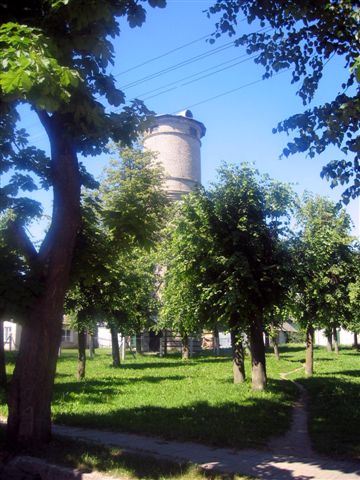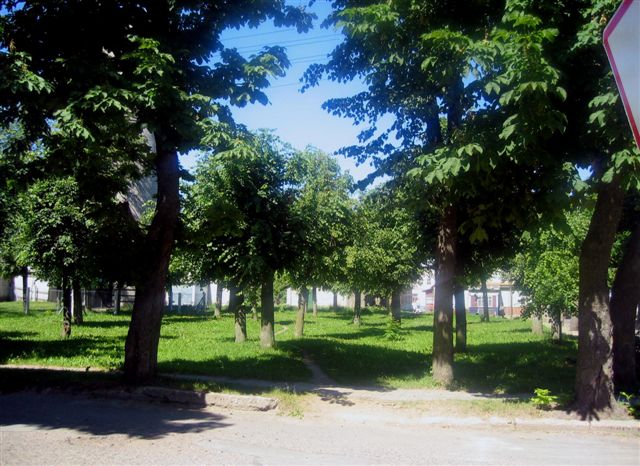 Alternate names: Eišiškės [Lith], Eshishuk [Yid], Ejszyszki [Pol], Eishishki [Rus], Aisheshuk, Aishishak, Aishishuk, Eishishuk, Eishyshok, Eyshishkes, Eyshishok, Aišiškės, Russian: Эйшишки. איישישוק-Yiddish . 54°10' N, 25°00' E, 38 miles SSW of Vilnius, 23 miles NNW of Lida in Šalčininkai region.
Alternate names: Eišiškės [Lith], Eshishuk [Yid], Ejszyszki [Pol], Eishishki [Rus], Aisheshuk, Aishishak, Aishishuk, Eishishuk, Eishyshok, Eyshishkes, Eyshishok, Aišiškės, Russian: Эйшишки. איישישוק-Yiddish . 54°10' N, 25°00' E, 38 miles SSW of Vilnius, 23 miles NNW of Lida in Šalčininkai region.
Yizkors: Eishishok, koroteha ve-hurbana (Jerusalem, 1960) , "Aishishuk"; its history and its destruction: documentaries, memories and illustrations (Israel, 1980), There once was a world: a 900-year chronicle of the shtetl of Eishyshok (Boston, 1998). (Ejszyszki, its History and Destruction)
This city in SE Lithuania on the border with Belarusis situated on a small group of hills and surrounded by the marshy valley of Verseka and Dumblė Rivers. Rivers divide the town into two parts; the northern part called Jurzdika and a southern part.Although Jewish settlement is claimed from the eleventh century, reliable data about Jewish presence comes only from the 18th century when they had a synagogue and two Jewish cemeteries. About half of the population, as the town grew so did the proportion of Jewish residents until in 1820 when the Jews were 80%. By 1850, the Jewish community had two beth midrashim and controlled trade and crafts.1897 Jewish population: 2,376 (70%). The town was part of Lida District of Vilna guberniya. Prior to the outbreak of WWII, 3,413 Jews lived in Eisiskes. In the inter-war period, Eišiškes had the Great Synagogue and two nearby beit midrashim. Jewish communities nearby included Šalčininkai, Turgeliai, Jašiūnai, Dieveniškes, and Valkininkai. The majority of Eišiškes Jews engaged in crafts and commerce, owned shops and inns, and were smiths, butchers, shoemakers, and grocers. In 1935, Jews owned 106 out of 117 businesses. After WWII one beit midrash was converted into a movie theater and the other into a sports' school. The third did not survive r. Most Jews lived in the town center on the current Vilniaus Street. Wealthy Jewish families lived in red-brick houses. The January 2008 population was 3,610. [March 2009]
Facebook [Aug 2015]
- There Once Was A World by Yaffa Eliach
- LitvakSIG
- Słownik Geograficzny Królestwa Polskiego (1880-1902), II, pp. 319-320: "Ejszyszki".
- Shtetl Finder (1980), p. 23: "Eshishuk".
- Pinkas HaKehilot, Poland, Vol. 8 (2005), pp. 124-129: "Ejszyszki".
- Lithuanian Jewish Communities (1991), pp. 95-96: "Eishishok (Eisiskes)".
- Encyclopedia of Jewish Life (2001), pp. 358-359: "Ejszyszki".
- Еврейская энциклопедия (1906-1913), "Ейшишки".
- Wikipedia [Oct 2014]
- Ejszyszki - The Untold Stories. The Murder Sites of the Jews
- Jewish Heritage Travel: A Guide to Eastern Europe
- Synagogue in Eisiskes - Jewish Virtual Library
- video [Aug 2015]
- 1858 revision list, see JewishGen LitvakSIG. For town and Jewish history, see Lida District Researchers.
- Landsmanshaftn in USA [Novermber 2014]
- Eishishok in the Past [April 2015]
- Maps [Aug 2015]
- United States Holocaust Memorial...
Wikipedia: " According to Jewish sources, there were tombstones dating from as early as 1097 at the former Jewish cemetery, making Eshishok one of the oldest Jewish settlements in Eastern Europe.[8] In the 18th century, the Jewish population accounted for about half of the population, and as the town grew, the proportion of Jewish residents increased, hitting a peak of 80% in 1820. Jews dominated trade and crafts: in 1935 out of 117 enterprises, 106 belonged to Jews. German troops arrived in Eišiškės on June 23, 1941, and on September 21, 1941, an SS Mobile Killing Squad entered the town, accompanied by Lithuanian auxiliaries. More than four thousand Jews from Eishishok and its neighboring towns and villages were first imprisoned in three synagogues and then taken in groups of 250 to the old Jewish cemetery where SS men ordered them to undress and stand at the edge of open pits. There, Lithuanian auxiliary troops shot them to death.[10] The old cemetery is now a site of remembrance with a memorial stone in three languages. The new cemetery was destroyed in 1953 and turned into the yard of a kindergarten. Some of the private Jewish buildings survive and are protected as part of the urban heritage. One school is now a library, while another was demolished. There are no Jews living in the town today. [October 2014]
MASS GRAVES:
Eisiskes (two massacre sites); 154-155; pic. # 249-252 US Commission for the Preservation of America's Heritage Abroad: On September 25-26, 1941, an Einsatzgruppen unit killed 3,446 Jews from Eišiškės and about 1,500 Jews from neighboring towns and villages. The men's bodies were buried in a trench dug around the old Jewish cemetery to prevent from accidental cultivation by local farmers.
The German Army occupied Eišiškes on June 24, 1941 with the Nazi Commander's Office and gendarmerie in the former secondary school. Later, several Lithuanian policemen were patrolled the town. Until Spring 1942, Eišiškes Rural District was part of Trakai District; but later a separate Eišiškes District was created. Local Jews lived peacefully until the end of July when German military sent 50-70 troops to Eišiškes; headquartered in the post office, to supervise renovation of the road between Vilnius and Grodno. German motorized units travelling to the Eastern front damaged the road. For the renovation work, Jews of Eišiškes were used. Driven to work in large groups of 100-150 people and supervised by German soldiers, their 8-10 days were hard and with no pay. Jews were ordered to wear a Mogen David. When the road renovation was complete, the Jews were forced to perform various meaningless jobs like carrying construction material from one place to another or to do physical exercise. German guards drove Jews to exhaustion and humiliated them. In mid-September, German military units left with only the local police remaining. On July 5, the governor of Trakai District ordered the rural districts chiefs to set up a Jewish council in each Jewish community with elect chairman and deputy chairman. Jewish councils had to abide by all orders of the authorities and police. 12 members were elected to the Jewish council of Eišiškes. Abraomas Kaplanas became the council's chairman. On the evening of September 21 (Sunday), a group of people from Vilnius dressed in plain clothes, but armed, arrived in Eišiškes. The locals referred to them as riflemen. The newcomers spoke Lithuanian. On Monday (September 22) local people awoke to the sound of gunfire. Armed Lithuanian "partisans" and policemen drove all the Jews out of their homes and into the three Eišiškes synagogues. Those who could not be squeezed into the synagogues were placed in the fenced market-place with guards. Only several dozen Jews escaped the arrest, either hiding at a neighbor's home or left the town. About 10 a.m. armed guards took around 400-500 Jewish men (18-40 years old) from one of the synagogues. Eighty Lithuanian "partisans" (white-bands) formed a column. The Jewish men, being beaten, walked with dignity, neither protested nor showed any resistance. The Head of the Eishishok Jewish community, Švarcas, walked at the front of the column. Local Poles started shouting that the Jews were being driven to be killed because they knew that graves in the old Jewish cemetery outside the town graves had been dug. Jews taken to the massacre site were told to take off their outer clothing. After that, they were driven in groups into the ditches and told to lie down in close ranks at the bottom of the ditch. Then, the murderers shot from the side of the grave. Some survived being only hurt after the shooting, but were covered with a layer of soil by the local Poles delivered from the town. Many shooters were drunk. Towards evening, as many as 7-8 large groups of Jews had been executed. They were laid in full graves, in layers one on top of the other. The killers returned to Eišiškes to spend the night. Several young men saved themselves by hiding in the piles of clothes and escaped unnoticed. The killings continued for at least two days. On the second day, Jewish women and children were executed at the edge of town*, a different location from where Jewish men had been killed. Guards under the influence of alcohol conveyed them to the massacre site. Jews from Eišiškes and also Valkininkai (around 300 people) and Kalesninkai (about 100 people) were executed. Germans filmed the killing and took photographs. (According to locals, a few weeks later, local Poles were taken to the cinema and shown the pictures of the killing of Eišiškes Jews.) On the third day of the slaughter, elderly Jews were shot near a Catholic cemetery. After the mass murders, the killers went to Jewish homes looking for Jews in hiding and plundered their property left behind. Jews found were executed. Besides September 22-23, murders may have continued on September 27. 3,446 Jews were killed: 989 men, 1,636 women and 821 children by policemen and white-bands from Trakai District (Kaišiadorys, Žasliai) and armed neighboring village young men. Members of Vilnius Special Squad also took part in the killing of Eišiškes Jews. Several Roma families were executed with the Jews. Among those who managed to escape were a family of a wealthy Jew, Mauša Sonenzon, six members of Chackel Koniuchovsky family and others. Bikievičius, who lived on Lebednikai estate, provided shelter to five Jews, Kazimiežas Korkutis in Korkutenai village designed a hideout for 28 Jews, who all lived to see the end of the Nazi occupation. After the war these people were awarded the title of the "Righteous Among the Nations" by Israel. A certain number of Jews found refuge in Rūdninkai forest and later joined Soviet partisans units. Jews of Šalčininkai in autumn 1941 were collected and driven to Varanavas (Belarus) where later they were executed in Varanavas District.photos [March 2009]
*WOMEN AND CHILDREN: In a large field and walking about 200 feet to a small area enclosed by a wooden fence is a monument written in 3 languages: Hebrew, English, and Lithuanian that say: "On September 25-26 1941, the murderous Nazis and their local collaborators viciously killed 2500 Jewish women and children from Eishyshok and its environs on this spot."
MEN: About a mile or so from the women and children memorial is a similar memorial with the same words and then: "on this spot on the same two days the Nazis viciously killed 1500 Jewish men from Eishyshok."
Video [Oct 2014]
Photo of memorial and information [Aug 2015]
The Jewish Mass Grave Site [Aug 2015]
The old cemetery is now a Holocaust memorial with a marker in three languages. [March 2009]
Eisiskes Jewish Cemetery - YouTube [Aug 2015]
NEW CEMETERY::
This cemetery was destroyed in 1953 and turned into the kindergarten playground. Most of the private Jewish buildings survive and are protected as part of the urban heritage. The synagogue was reconstructed into a sport hall and is now abandoned. [March 2009]
Photo courtesy This email address is being protected from spambots. You need JavaScript enabled to view it.


